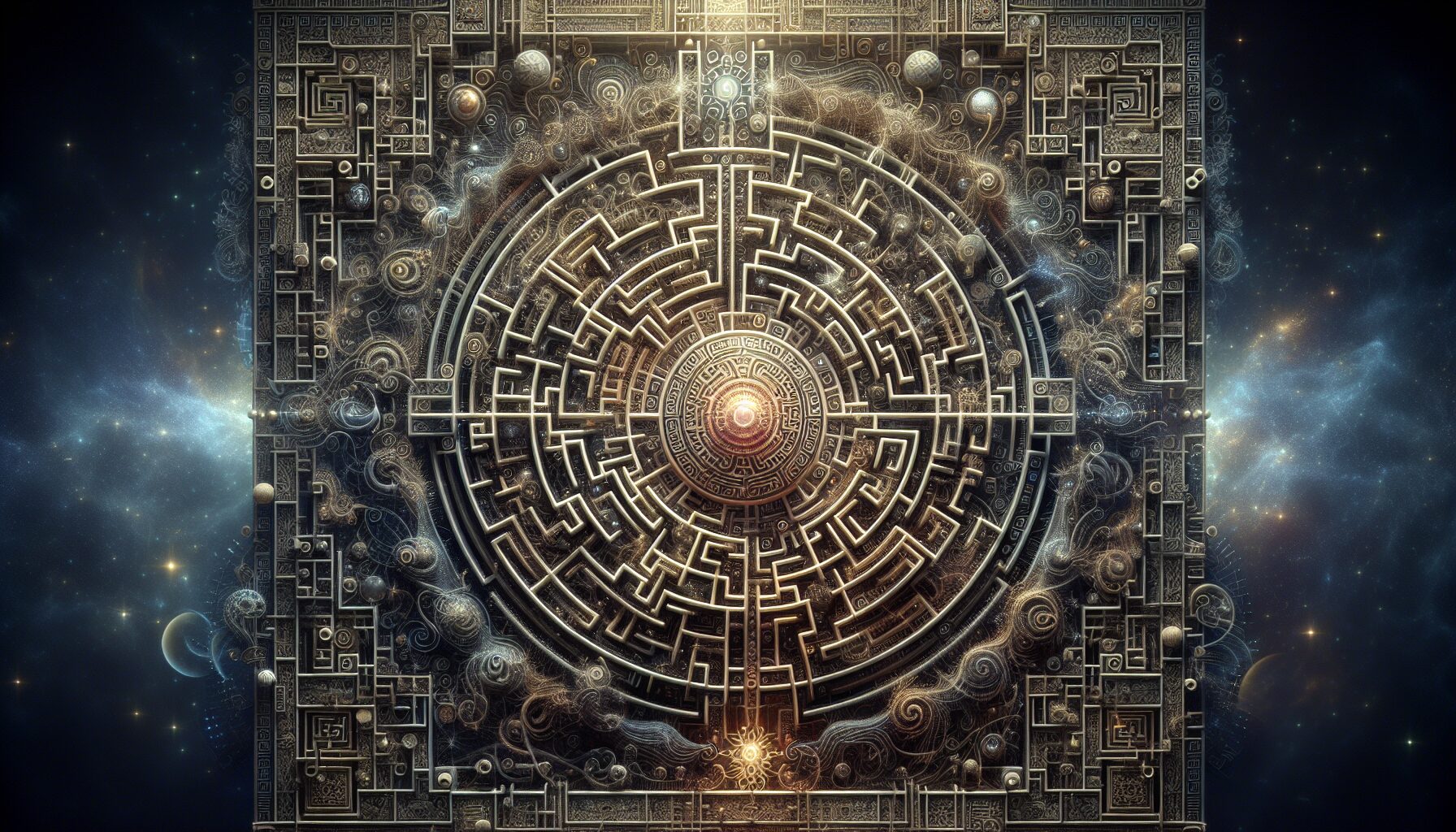Throughout human history, myths and metaphors have served as the guiding threads through the labyrinthine corridors of cultural identity and existential inquiry. The labyrinth, a poignant symbol that runs deep within the mythologies of various civilizations, embodies both a physical and spiritual journey toward self-discovery and understanding of the divine.
Origins of the Labyrinth
The most celebrated labyrinth in myth is perhaps the one on Crete, described in Greek mythology. Built by the master craftsman Daedalus, it was a bewildering double maze intended to contain the Minotaur, a creature with the body of a man and the head of a bull. This myth speaks volumes about the complexity inherent in the relationship between humans and gods, illustrating the struggle of man against fate and divine intervention.
“In the Labyrinth, the Minotaur represents more than monster or man – it is the symbol of our potential for both destruction and rebirth,” says Joseph Campbell, a preeminent scholar of mythology.
The Labyrinth as Metaphor
The labyrinth also serves as a powerful metaphor for the human quest for knowledge and enlightenment. The journey through the labyrinth is akin to the journeys that individuals undertake in their personal lives – filled with twists, turns, and sometimes, daunting dead-ends. It mirrors the spiritual path, where each step is fraught with challenges that test our resolve and character.
In literature and psychology, the labyrinth motif is often used to explore the complexities of the mind. The psychoanalyst Carl Jung viewed the labyrinth as a model of the unconscious: an intricate structure within which the self is hidden and through which one must navigate to achieve individuation. Jung’s work is profoundly woven into myriad discussions about the symbolism of the labyrinth as both a puzzle and a journey towards self-realization.
Labyrinths Across Cultures
The motif of the labyrinth is not restricted to Greek mythology alone. Various cultures have constructed labyrinths, each with its own unique interpretation:
- Nordic Mythology: The Vikings carved labyrinthine designs to symbolize protection and ensure safe passage. These Troy Towns were believed to trap malevolent spirits or to confuse and fend off what was evil.
- Native American Traditions: The Hopi people envisioned labyrinths as symbolic of Mother Earth’s womb, highlighting birth, life, death, and rebirth.
- Christian Symbolism: In the Middle Ages, labyrinths were used in cathedrals, such as the famous Chartres Cathedral in France, serving as a path for pilgrimage and reflecting the soul’s journey toward salvation.
Relevance in Modern Mythology and Media
The labyrinth continues to be a prevalent theme in modern storytelling and media, serving as a universal symbol of introspection and transformation. From novels and films to interactive video games, the motif remains deeply embedded in narratives where protagonists must navigate their internal and external labyrinths to emerge changed or enlightened.
Take, for instance, the film Pan’s Labyrinth by director Guillermo del Toro. It deftly intertwines mythical elements with reality, positioning the labyrinth as a place of moral and spiritual testing, a place where the boundaries between the real and the surreal blur.
“I have a complicated relationship with fantasy and mythology, and what I love about the image of the labyrinth is that it is both a trap and a way out,” explains del Toro (IndieWire).
The Timeless Appeal of the Labyrinth
The labyrinth’s endearing allure lies in its dual purpose: it serves as both a dwelling of transformation and an unraveling of the divine mystery. As we venture through our personal labyrinths, the myths and metaphors invite us to reflect upon our own journeys, much like Theseus, guided by the thread of Ariadne, mustered the courage to navigate darkness and confrontation with the Minotaur.
In this ongoing dialogue between the metaphysical and the tangible, the labyrinth remains a testament to the ever-evolving relationship between mankind, its inner psyche, and the divine. It bridges the age-old stories of gods and heroes with our modern quest for meaning, identity, and connection.

Comments